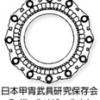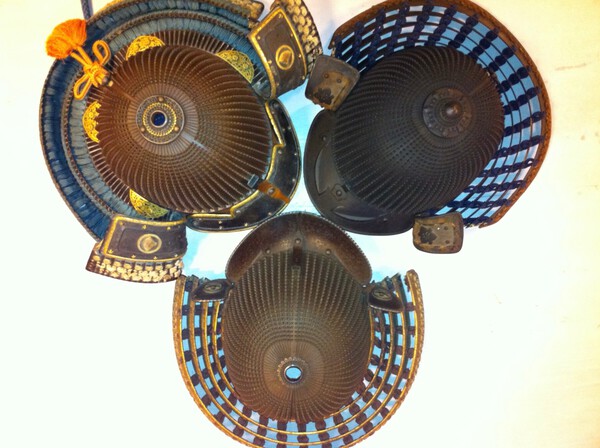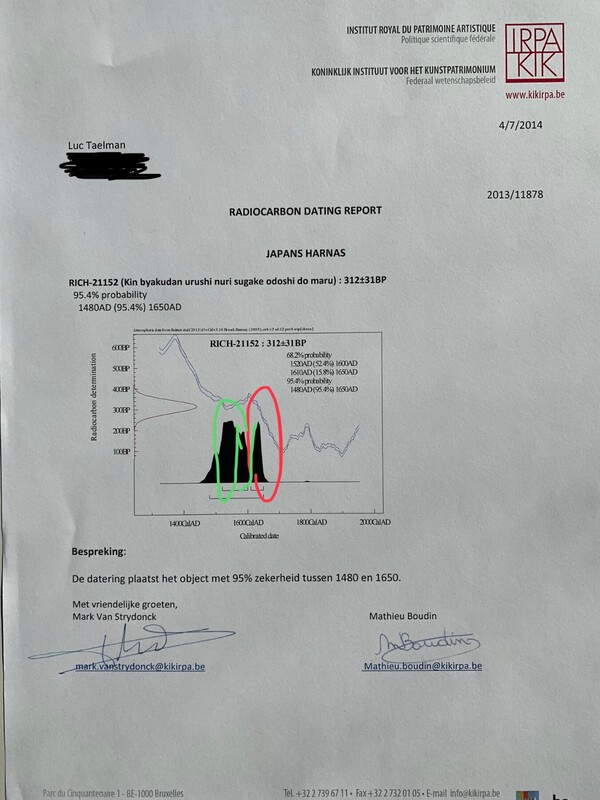-
Posts
508 -
Joined
-
Last visited
-
Days Won
2
Everything posted by Luc T
-
Ototsugu, a fine craftsman, worked for Kurosawa in the 1970-1980s
-
-
there is more information in this find. Look at the shape! It reminds me on some (gimei) Yoshimichi 8 plate kabuto I saw before. And the Tsuyama smiths were known to copy Gitsu's work. The missing link here?
-
Iechika is a big name! There is an Iechika on the cover of our Saitome book. Fine & nice armor Gary!
-
In the early edo period, the Myochin started to copy Nanbokucho and Kamakura kabuto. They also copied Gitsu and Nobuie. But. They always made the same mistake, they exaggerated all the old features. This abalone is a joke. Bad proportions, ugly, fluffy forging, and over the top. I wonder where it was made, Tadjikistan? Tora bora mountains? Or Bangkok? I vote outside Japan.
-
-
Well Andy, I haven't seen enough work from your hands to make publicity, maybe this changes after a visit of your koubou. I can Imagine that politics are a part of the game, but on the other hand, Robert Soanes is a deshi from him, and he is supporting him under all circumstances. "And a lot of daimyo armors from the Edo period are also composites. Just a fact of life. But as composites they have meaning from the historical set and setting of the time of manufacture. " sure, most of them have older (or younger) parts. but if you 'read' the armor, it makes sense. Although it takes decades to understand this. "The armor that sold at the french auction a while back with modern scales, a switched out helmet, and now a switched out mempo." Are these modern scales???? I did not notice!
-
about the transformation from deshi to shokunin, , I am sure Andy can tell much more about this than me but this is the philosophy. I think it comes from Piers, some years ago: The teacher is watching the temperament of his deshi, and waiting for him or her to mature in character and settle down, until he/she understands the required social obligations as second nature or breathing the air around. That, more than the skill, will surely take the years to achieve, and perhaps guarantee that this person will never leave the path in future. Then the risk of releasing him/her into society can be taken by the sensei, and the deshi can become a fully-fledged shokunin with knowledge and wisdom and humility, and the will to keep learning, and a resultant respect for and from others.
-
I can count the ones I know on one hand. there are guys that are good in odoshi. some are good with urushi or ironwork. but complete educated restorers... very, very few. Nishioka is training 3 young guys. They have to work 10-15 years for peanuts till they can do independent jobs. Much respect for those guys.
-
You are right Andy. I had the chance to visit Nishioko Koubou, and I am imrpessed by the way he teaches his deshi. I am also impressed by his work and his knowledge of history. this is a lifetime job if you ask me. It is a joke to think you can learn this by yourself. to me, the biggest problem by the layman is the lack of indepth knowledge of Japanese history. I saw the most stupid combinations of assembled armors on the market lately. Incredible.
-
C14 needs some interpretation. The red zone does not match the style and can be excluded. The same goes for the zone before 1550. the massive just before 1600 is most probably, thus our zone can be limited to those~20 years. I normally take a chip of flaking urushi. Kozane can be reused from elder armors.
-

Cultural Vandalism, or cultural inheritance? You decide.
Luc T replied to Samurai Art's topic in Katchu
I can’t agree more. It takes a serious study before starting a restoration. The patina of ages is also intruiging and a part of history and beauty of armor. I have seen relacquered kabuto that really did not need any treatment. They look like an old lady full of botox and silicon to look like something they never were. before I start a restoration, I discuss this with my restorer and if needed with his Japanese sensei. Normally, it takes a couple of months before we decide what to do. -

Cultural Vandalism, or cultural inheritance? You decide.
Luc T replied to Samurai Art's topic in Katchu
I see no harm in restoring these pieces in this condition, on the contrary. -
Indeed Andy, there is always a margin of ~20 years (or more). I use the middle of the timeframe as a quick tool. But it never is exact. in this,case, I have to look it up. I use C14, executed by the KIK in Brussels (outstanding reputation)
-
I think it’s another one Ian, according my information it is brand new. I’ll ask if I can publish pictures.
-
an interesting zunari Barry, thanks for sharing this.
-
I saw pictures from a copy of Tokugawa’s daikokunari gusoku, made by Nishioka san. Incredible work!
-
Paul, it’s the Saotome their trademark, and thus called the Saotome byo. More info: www.Saotomebook.com it’s certainly not a mistake, this in on purpose. Maybe it is made by a Myochin in the Saotome style, but that seems not very logical. Do you have a sharp pictire from the inside arond the tehen no ana?
-
At first glance You have a nice Saotome here. Unsigned but all the technical features are there. except that it seems made front to back. But better pictures can tell this.
-
I guess 60% leather. It’s extremely light.
-
it's all a very logical evolution, from haramaki or domaru to marudou. Look at this one. marudou. c14 prooved +-1575. it was found on the east side of lake Biwa, where it popped up in the seventies. hon kozane, tsutsumi and sugake laced. The point is that a lot more mogamido ar found in the east of Japan, in high and low quality. most of the time, they are executed very sober, as can be expected. in the Yamato and Owari region however, they are rather high ranking stuff, with a lot of colours.
-
Alex buying armor is not different from buying nihonto I suppose. or you buy cheap and hope you are the only one who saw it on the market: 90% you bought something bad you buy expensive without a lot of pictures or guarantees (auction houses): 50% you bought something bad you buy from a trustworthy known dealer: 90% you bought something good, but maybe expensive. After all, the last case is the best. If the armor is good, you will forget the price and enjoy the item. according to Dr Robert Burawoy, there are 3 options to collect: you spend a lot of money and buy on trustwothy exclusive dealers. you study a lot and pick up the fine things among the crap. or something inbetween. Best way is to learn and to join the Japanese Armor Society . and we don't mention shinsa papers yet..










